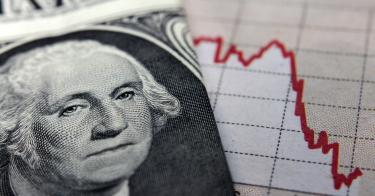The public’s top concern continues to be inflation and high prices. While the rate of inflation has declined, it remains elevated compared to the pre-pandemic norm and the Federal Reserve’s target.
Since inflation is cumulative, prices rising at a slower rate is of little comfort to those who still remember what prices were three to five years ago. Higher interest rates mean that the cost of a new home mortgage is now unaffordable for many. This is especially tough for young couples looking to start a family.
One would hope, under these circumstances, that federal policy-makers would try to douse the inflationary fire. Unfortunately, both Congress and the White House seem determined to pour fiscal gasoline on the open flames.
They’re continuing the unprecedented spending spree that started in March 2020 with the pandemic—which is one of the crucial factors behind this spike of inflation. Multiple rounds of poorly targeted “stimulus” packages, Green New Deal subsidies, corporate welfare schemes, over $700 billion of administrative spending hikes from the Biden administration . . . it all adds up. Interest on the debt is skyrocketing, with payments up 42 percent year-over-year as of May 2024 and taking up a larger portion of the budget than national defense.
>>> How To Weather Our Economic Storm Without Capsizing
According to the latest estimates, the federal government will add $22.5 trillion in public debt over the next decade. To put that in perspective, it took from 1789 to 2021 for the public debt to reach $22.5 trillion.
Both parties are still used to the pre-pandemic status quo of low-consequence deficit spending. Business as usual meant giving new handouts to special interests, bipartisan logrolling packages, and using various forms of the “emergency” spending to move trillions of dollars without budgetary constraints.
- As part of its ongoing campaign to shift the cost of student loans from borrowers to taxpayers, the Biden administration’s latest scheme would expand debt write-offs for several categories of people. The Committee for a Responsible Federal Budget estimates this would cost a combined $220 billion to $750 billion, on top of over $400 billion to date.
- The Biden administration has finalized a rule to expand so-called “state directed payments” under Medicaid. This is linked to a funding gimmick exploited by states to use provider taxes to maximize federal Medicaid contributions to states and Medicaid providers. The Committee for a Responsible Federal Budget estimates this change would add $50 billion to $220 billion in additional costs to the Medicaid program.
- House and Senate Republicans are pushing for tens of billions of dollars in additional subsidies for agribusiness, primarily in the form of increasing price guarantees. This is a solution in search of a problem, since farm income is strong and most payments go to the largest and wealthiest operations.
- In the wake of a massive settlement between the federal government and cryptocurrency exchange operator Binance, the federal Crime Victims Fund is expected to receive a $1.5 billion deposit. Congressional appropriators will then use a long-standing budget gimmick to “limit” spending from the fund and use the “savings” to increase spending elsewhere. In turn, since the balance in the victims’ fund gets rolled over, the “savings” gimmick gets reused in following years.
- The Senate has passed legislation to expand compensation for those exposed to radiation because of federal actions in the 20th century. Though this does address a legitimate federal responsibility, the Senate did not budget for the estimated $50 billion cost.
- The House passed a bill to provide tax deductions and exclusions to those affected by federally declared disasters. This would cost roughly $5 billion, which could easily be balanced by addressing some of the many examples of spending in the tax code. However, sympathy overwhelms practical concerns about the danger of adding to the federal debt.
- The Biden administration has requested $4 billion in emergency funding, primarily to rebuild the Francis Scott Key Bridge in Baltimore. There are many ways to pay for the project with existing infrastructure funds. These include pulling some of the allocations for 2025 or 2026 forward to this year, cancelling the administration’s $3.1 billion grant to California’s high-speed rail boondoggle, or reducing funding for low-priority local infrastructure such as bike lanes and hiking trails.
>>> The Left’s $7 Trillion Lie: Biden Far Outpaces Trump in Racking Up the National Debt
Such behavior is tolerated because the nation’s political and media elites view the expansion of federal programs and subsidies as normal. Members who often work across the aisle on deficit-increasing legislative packages are labeled “centrist” or “moderate.” In contrast, the small handful of fiscal hawks in Congress are regularly described as some version of “far-right.”
Yet the real extremists are elected officials who turn a blind eye to the gushing rivers of red ink that threaten to drown America’s prosperity. This continually irresponsible governance—no offsets to new spending, arcane gimmicks, willfully ignoring broken benefit programs—ought to be a raging scandal rather than a niche concern.
The last meaningful push for deficit reduction was a result of the grassroots Tea Party movement. Although those effects were sadly short-lived, it points to the ability of citizens to discipline the political class for its excesses.
A similar movement for smaller government and fiscal restraint is badly needed. Otherwise, it appears that nothing short of economic ruin will force Washington to change course.
This piece originally appeared in the National Review



